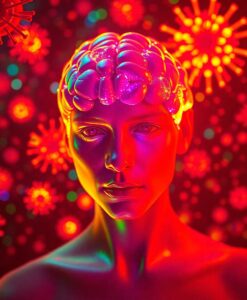Scientists found two groups of microglia with opposing effects on anxiety. One group appears to promote anxious states by pruning certain synapses or releasing chemical signals that heighten vigilance. The other group seems to dampen worry by stabilizing connections or curbing inflammatory signals. That duality opens new ways to think about treatments that target immune function rather than only aiming at neurotransmitters, and it raises questions about how infection, sleep, diet, and aging might sway those microglial balances.

This line of research connects directly to human potential and inclusion because anxiety influences learning, work, and social belonging. If therapies could gently nudge microglial states, they might restore functioning for people whose lives are limited by chronic anxiety. Click through to explore the experiments and what they imply about reshaping the brain’s immune landscape to support resilience and well‑being.
Researchers have uncovered surprising evidence that anxiety may be controlled not by neurons but by two dueling groups of immune cells inside the brain. These microglia act like biological pedals—one pushing anxiety forward and the other holding it back.


